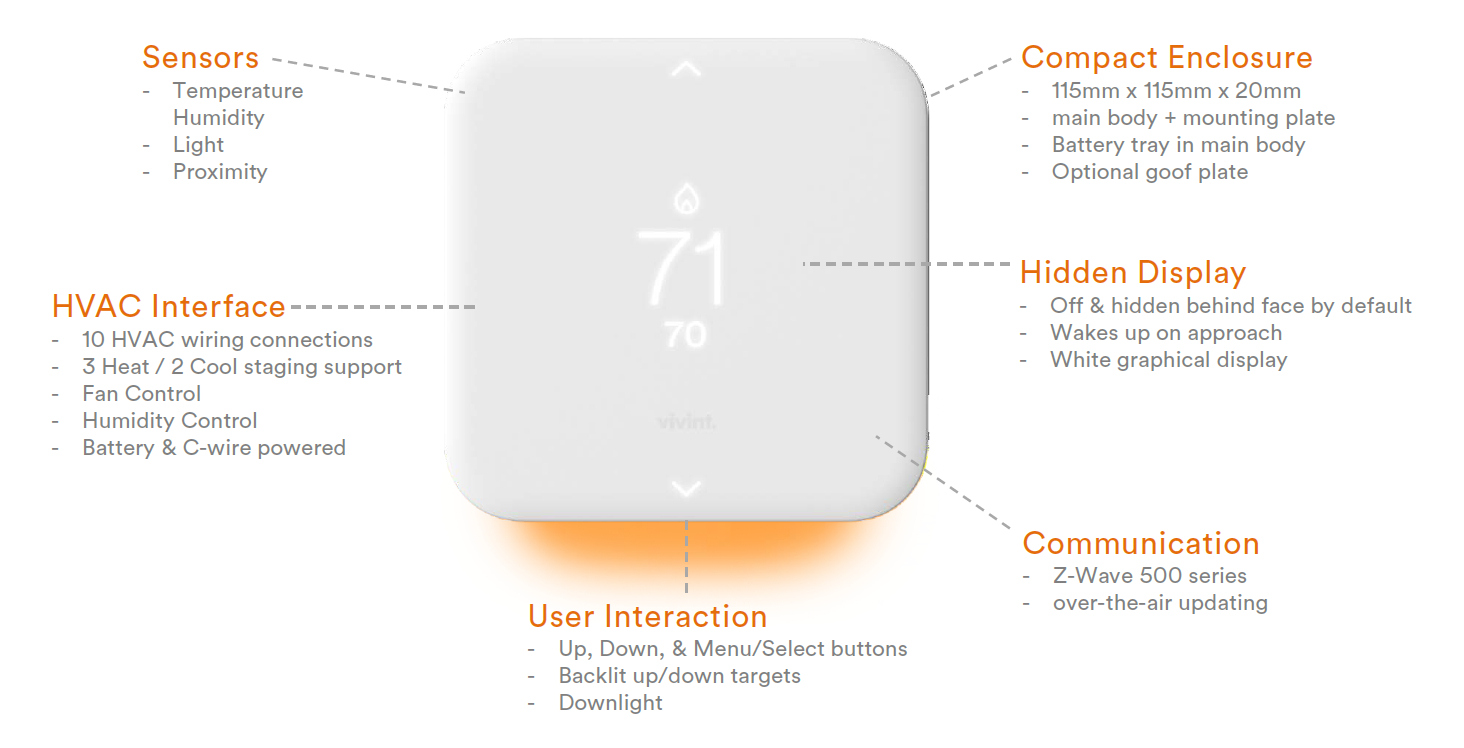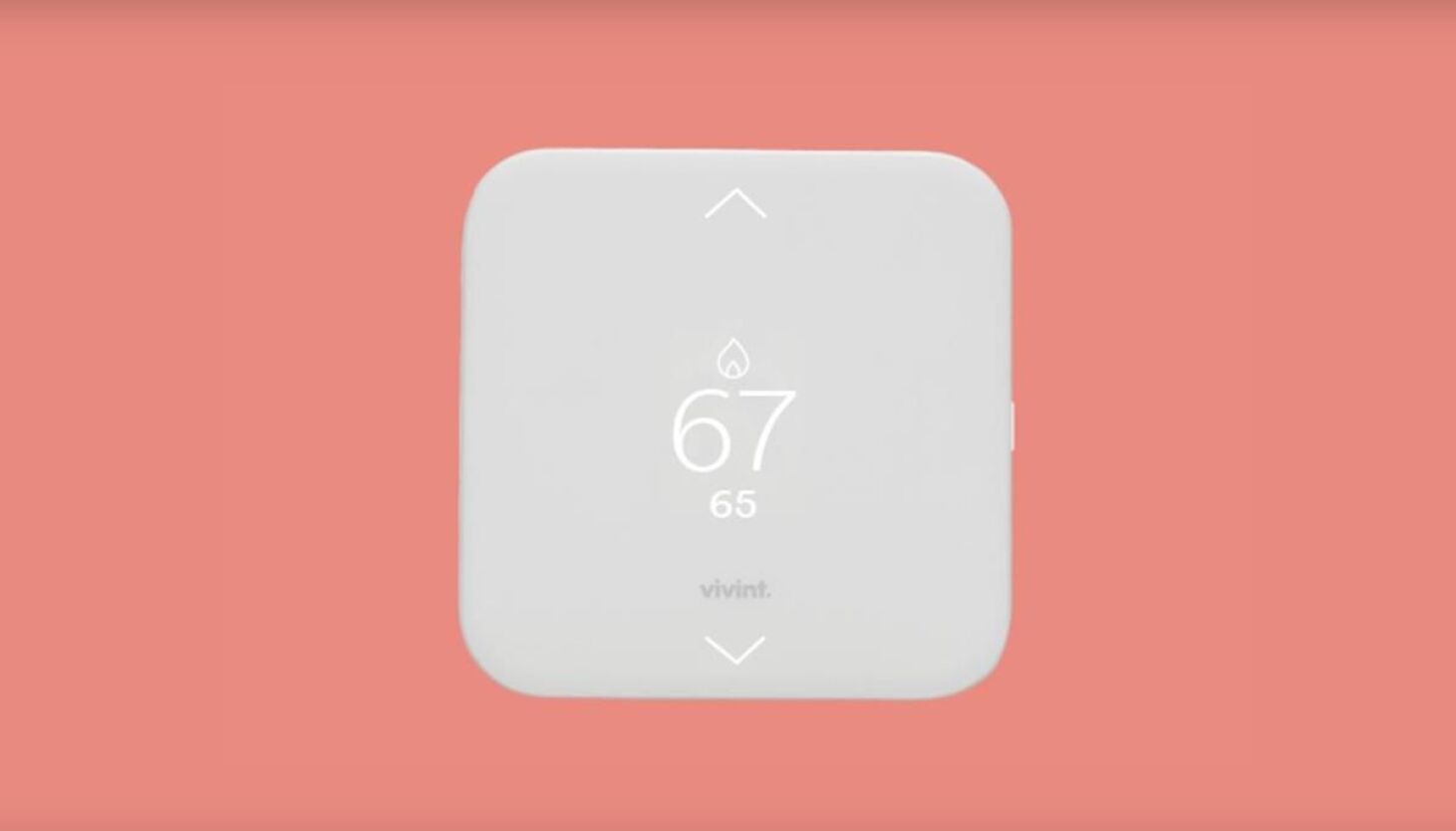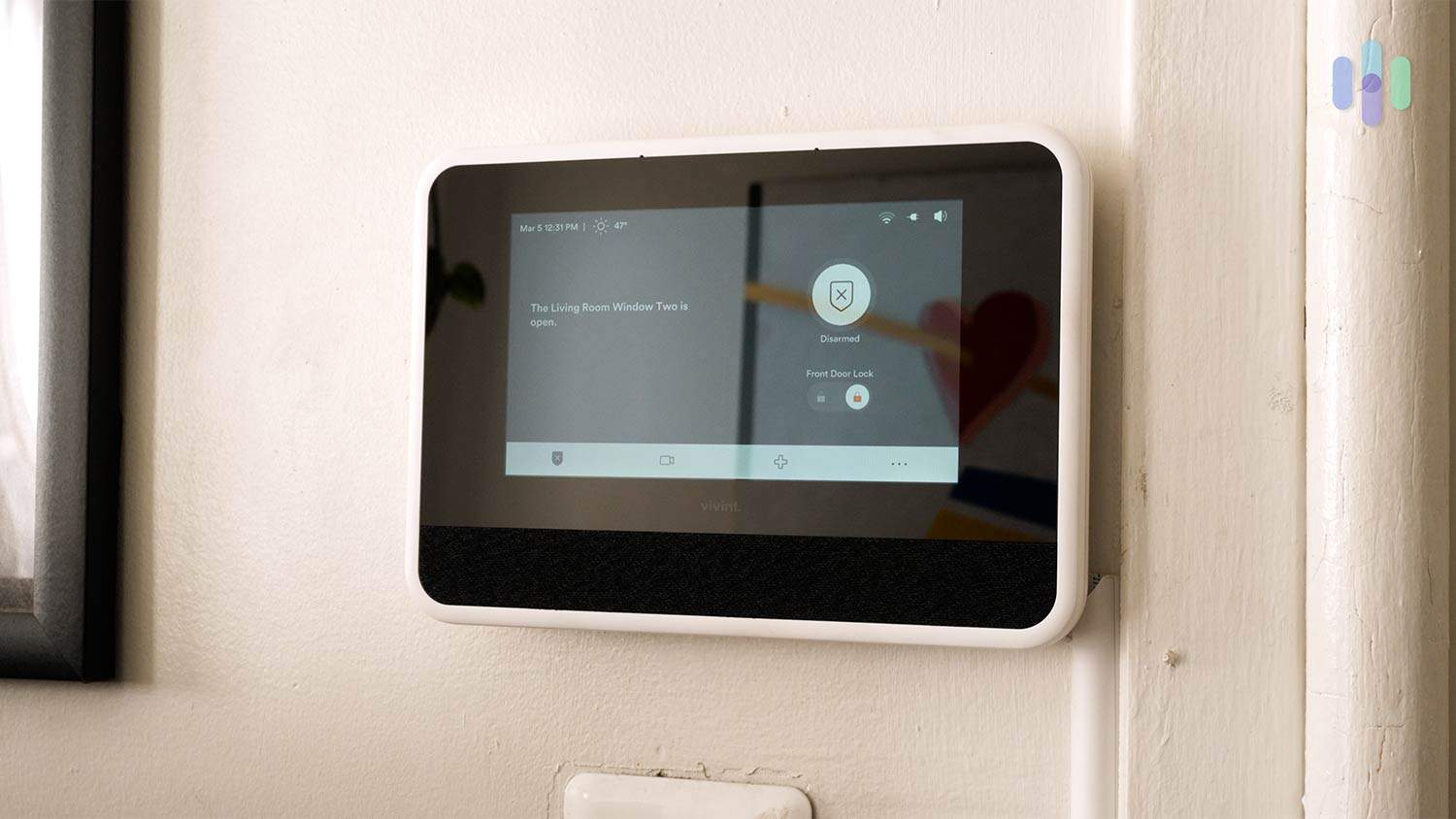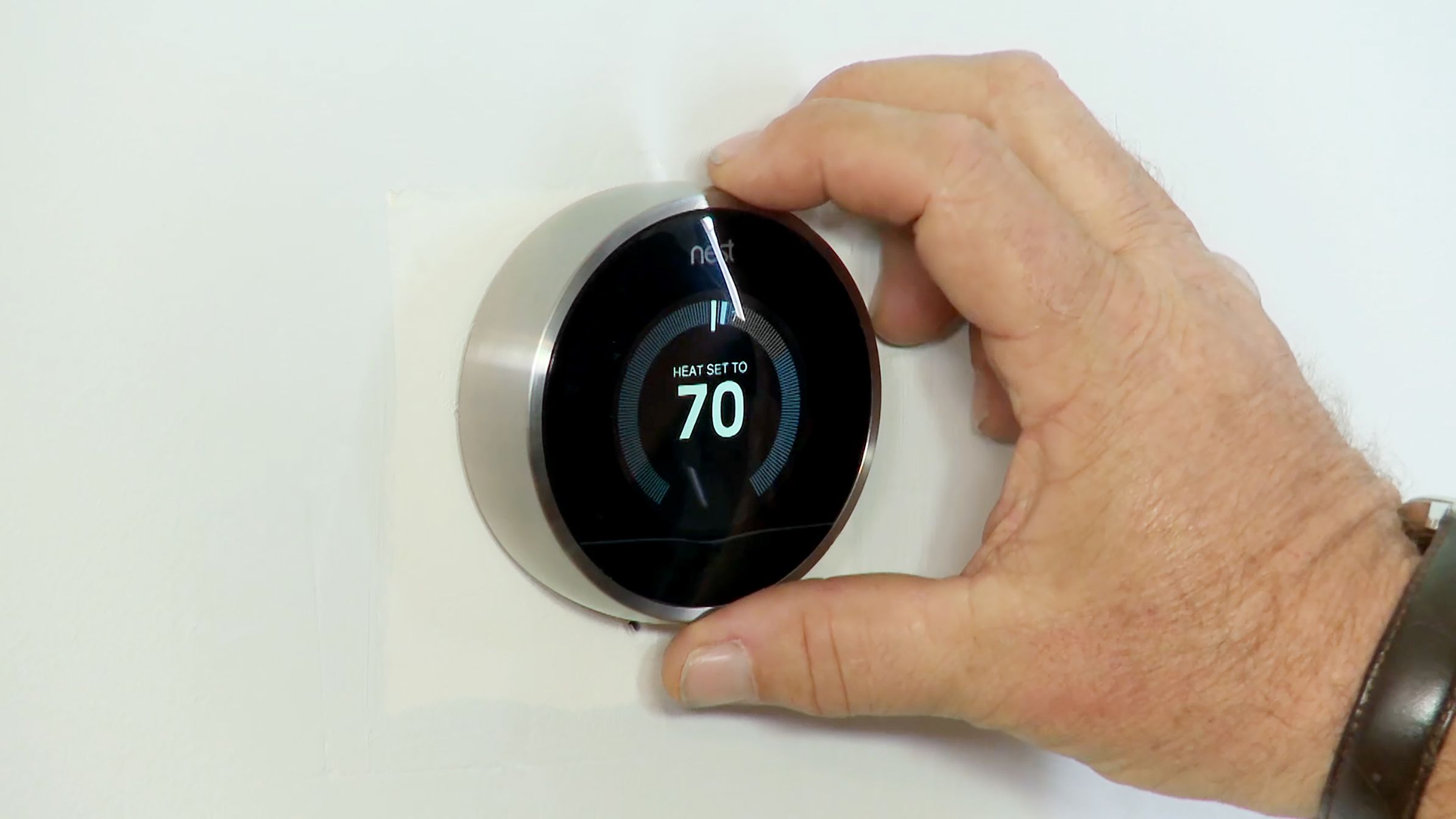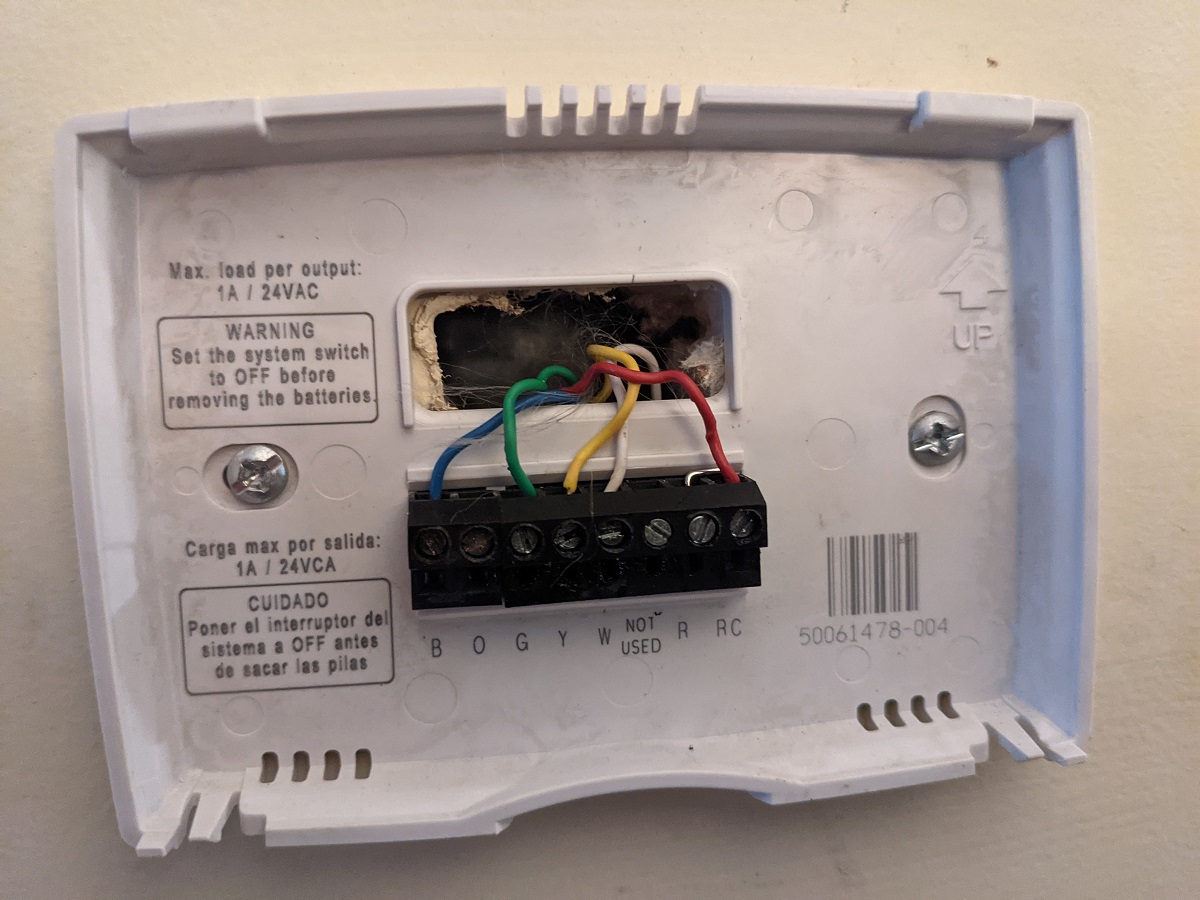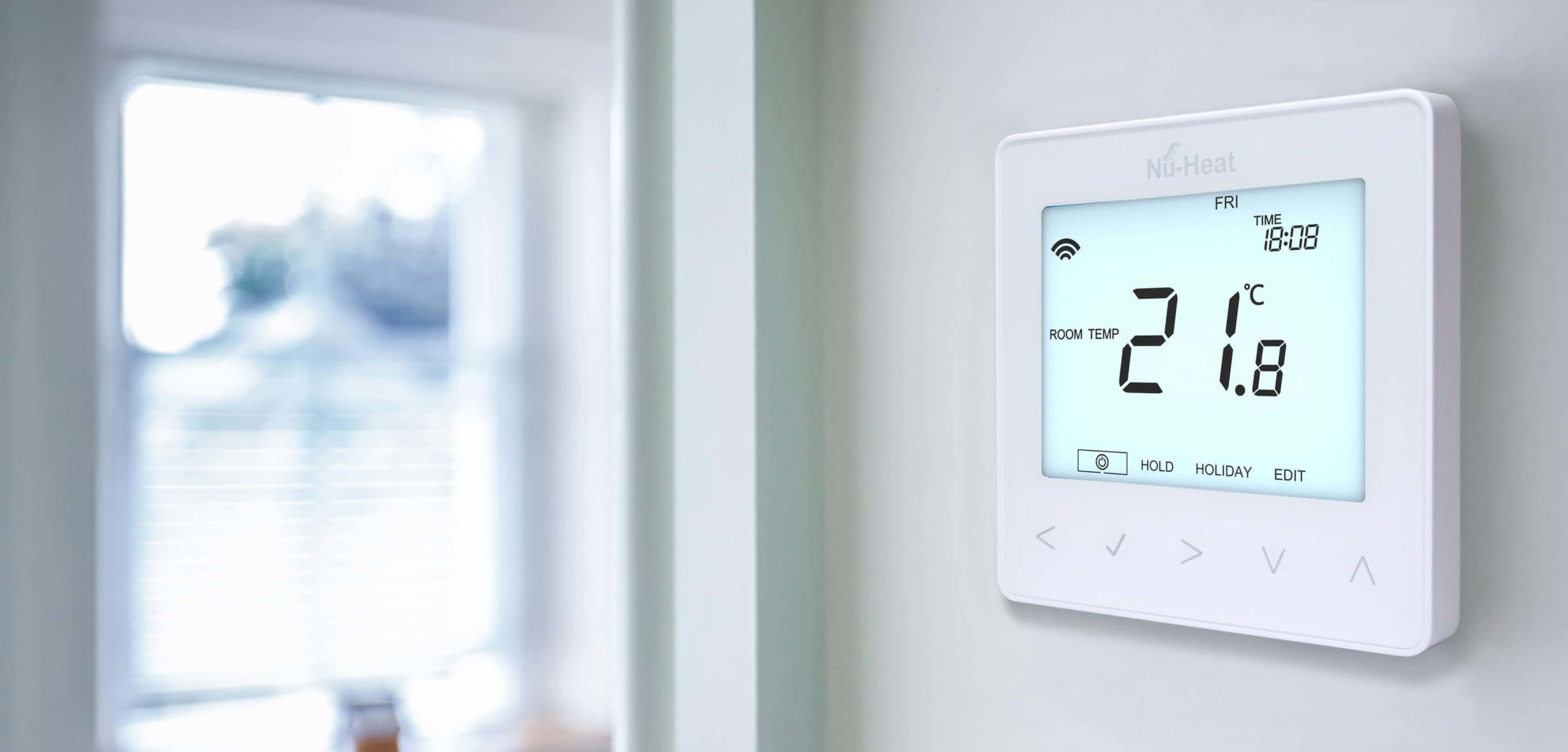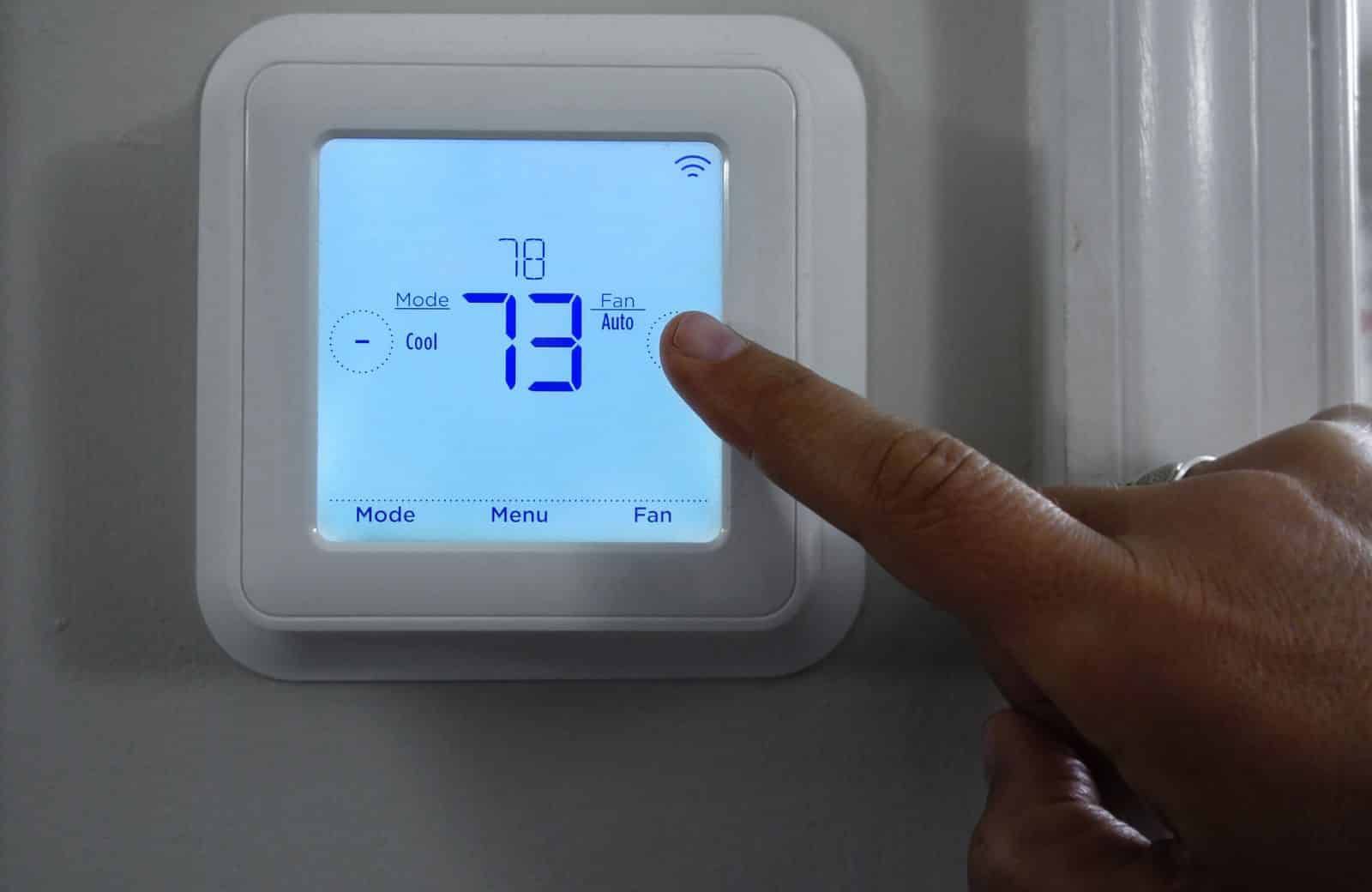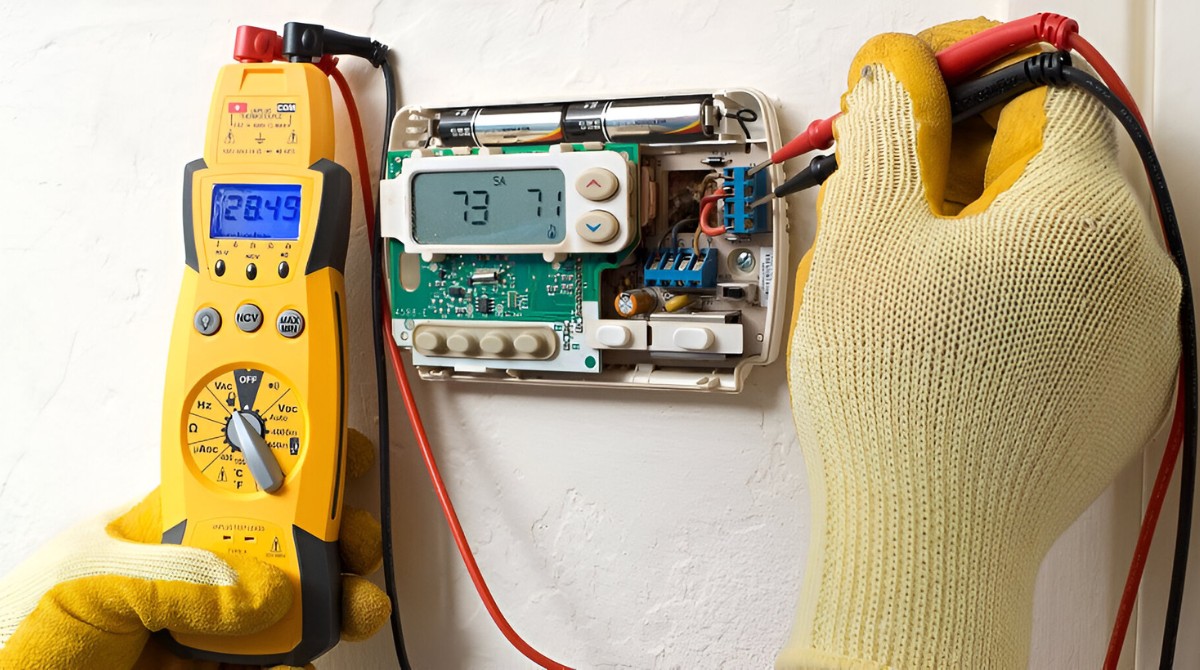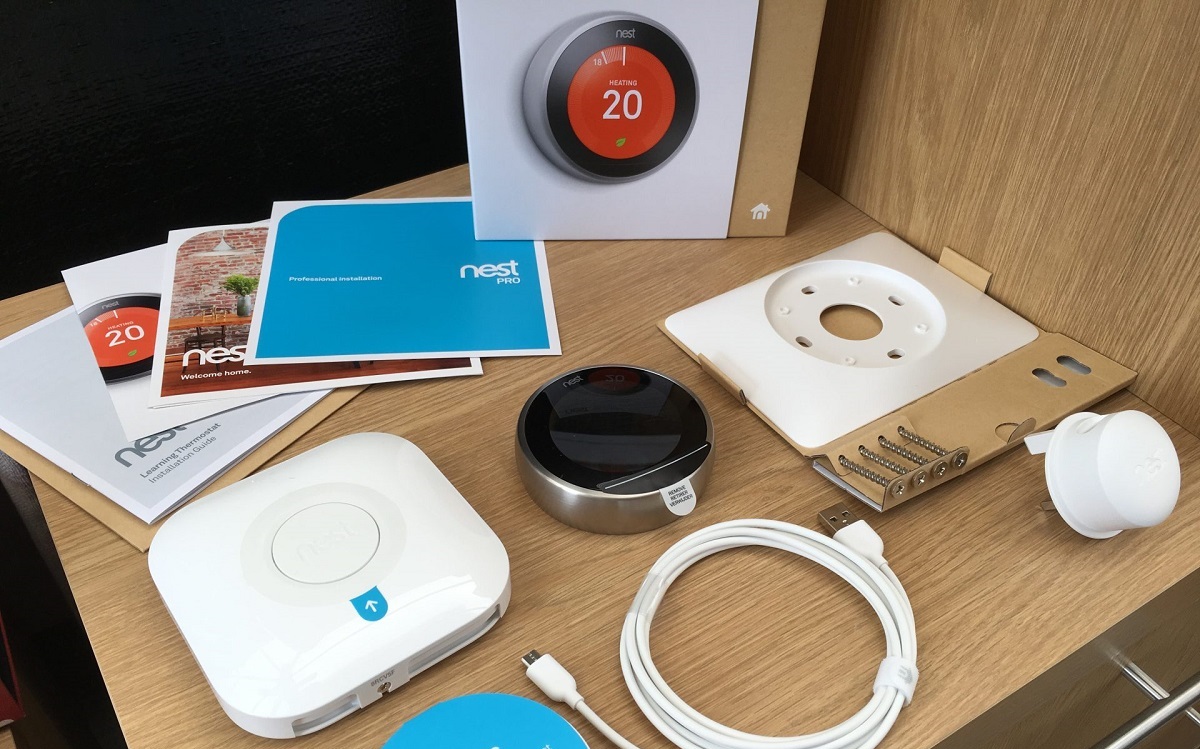What is Vivint Thermostats
Vivint Thermostats are smart devices that not only control the temperature of your home but also provide advanced features and connectivity options to enhance your overall comfort and energy efficiency. These state-of-the-art thermostats are equipped with cutting-edge technology, allowing you to remotely monitor and adjust the temperature settings of your HVAC system from anywhere, using a smartphone or tablet.
With Vivint Thermostats, you can easily create custom schedules that align with your daily routines. This means that you can have your home at the perfect temperature when you wake up, return home from work, or go to sleep. Furthermore, these thermostats can learn your preferences over time and automatically adjust the temperature based on factors like occupancy and weather conditions, ensuring optimal comfort and energy savings.
One of the key benefits of Vivint Thermostats is their compatibility with a wide range of HVAC systems. Whether you have a central HVAC system, a heat pump, or a ductless system, Vivint Thermostats can seamlessly integrate and optimize the performance of your heating and cooling equipment.
Types of HVAC Systems
HVAC (Heating, Ventilation, and Air Conditioning) systems are designed to provide a comfortable indoor environment by regulating temperature, humidity, and air quality. There are several types of HVAC systems commonly found in residential and commercial buildings:
- Central HVAC Systems: Central HVAC systems consist of a central heating unit, such as a furnace or boiler, and a central air conditioning unit. These systems use a network of ducts to distribute conditioned air throughout the building.
- Heat Pump Systems: Heat pump systems are versatile as they can provide both heating and cooling. They extract heat from the air or ground to warm the building in winter and remove heat from indoors to cool the space in summer.
- Ductless HVAC Systems: Ductless HVAC systems, also known as mini-split systems, do not require ductwork for air distribution. They consist of an outdoor unit and one or more indoor units that allow for zone-based temperature control.
- Geothermal HVAC Systems: Geothermal HVAC systems harness the constant temperature of the earth to provide heating and cooling. They utilize underground pipes filled with a heat-transfer fluid to exchange heat with the ground.
- Hybrid HVAC Systems: Hybrid HVAC systems combine the functionality of a heat pump and a gas furnace. They automatically switch between the two heat sources based on the outdoor temperature and fuel costs to optimize energy efficiency.
Each type of HVAC system has its own strengths and considerations when it comes to compatibility with smart thermostats like Vivint Thermostats. Understanding the type of HVAC system you have is crucial to determining whether Vivint Thermostats will be compatible and function efficiently.
Compatibility with Central HVAC Systems
Central HVAC systems are one of the most common types of heating and cooling systems found in residential and commercial buildings. These systems use a centralized unit, such as a furnace or boiler, to heat the air and a central air conditioning unit to cool it before distributing it throughout the building via a network of ducts.
Vivint Thermostats are fully compatible with central HVAC systems, making them a great choice for homeowners looking to upgrade their thermostats to a smart and efficient solution. Whether you have a gas, oil, or electric-powered central heating and cooling system, Vivint Thermostats can seamlessly integrate and enhance its functionality.
With Vivint Thermostats, you can enjoy advanced features such as remote temperature control, customized schedules, and energy usage monitoring. You can easily adjust the temperature settings of your central HVAC system from anywhere using the Vivint Smart Home app on your smartphone or tablet. This allows you to ensure optimal comfort while maximizing energy savings.
Additionally, Vivint Thermostats are designed to optimize the performance of your central HVAC system. They can intelligently manage temperature changes, taking into account factors such as outdoor weather conditions, occupancy patterns, and even your preferred temperature settings. This ensures that your system operates efficiently and provides consistent comfort throughout your living space.
Installation of Vivint Thermostats with a central HVAC system is typically straightforward, but it’s recommended to consult with a professional HVAC technician to ensure proper wiring and compatibility. The technician can also assist in configuring the thermostat settings and providing any necessary adjustments to achieve optimal performance.
In summary, Vivint Thermostats are fully compatible with central HVAC systems and offer a range of features and benefits that can enhance your overall comfort and energy efficiency.
Compatibility with Heat Pump Systems
Heat pump systems are popular and energy-efficient options for both heating and cooling homes. They work by extracting heat from the air or ground and transferring it into the building during winter, and reversing the process to remove heat from indoors during summer.
Vivint Thermostats are fully compatible with heat pump systems, providing homeowners with the ability to control and optimize their heating and cooling settings conveniently. Whether you have a traditional air-source heat pump or a ground-source geothermal heat pump, Vivint Thermostats can seamlessly integrate and enhance the performance of your system.
One of the key features that make Vivint Thermostats compatible with heat pump systems is their ability to intelligently manage the switching between heating and cooling modes. Heat pump systems rely on this functionality to efficiently provide heating or cooling based on the temperature needs of the building.
With Vivint Thermostats, you can easily set and adjust temperature settings based on your preferences and schedule using the Vivint Smart Home app. The thermostats also consider factors such as outdoor weather conditions and occupancy patterns to provide automated, energy-saving temperature control.
Additionally, Vivint Thermostats offer features like smart scheduling and learning algorithms that allow them to adapt and optimize temperature settings based on your behavior and preferences. This helps to maximize energy efficiency and ensure that your heat pump system operates at its full potential.
Installing Vivint Thermostats with a heat pump system is usually straightforward, but it’s recommended to consult with a professional HVAC technician to ensure compatibility and proper installation. The technician can assist in configuring the thermostat settings, proper wiring, and provide any necessary adjustments to ensure optimal performance.
In summary, Vivint Thermostats are fully compatible with heat pump systems, offering enhanced control and energy-saving features to provide optimal comfort and efficiency for your home.
Compatibility with Ductless HVAC Systems
Ductless HVAC systems, also known as mini-split systems, are a popular choice for homeowners who want to have zone-based temperature control and avoid the need for extensive ductwork. These systems consist of an outdoor unit and one or more indoor units that can be installed in different areas of the home.
Vivint Thermostats are fully compatible with ductless HVAC systems, allowing homeowners to have smart and efficient control over their heating and cooling settings. Whether you have a single-zone or multi-zone ductless system, Vivint Thermostats can easily integrate and enhance the performance of your system.
With Vivint Thermostats, you can conveniently control the temperature settings of each indoor unit from anywhere using the Vivint Smart Home app. This gives you the ability to customize the comfort level in different areas of your home, ensuring that each room is at the perfect temperature.
Furthermore, Vivint Thermostats offer features such as scheduling and learning algorithms that adapt to your daily routine and preferences. This means that the thermostats can automatically adjust the temperature based on occupancy patterns and outdoor weather conditions, maximizing both comfort and energy efficiency.
Installation of Vivint Thermostats with ductless HVAC systems is relatively simple, but it’s still recommended to consult with a professional HVAC technician. They can ensure compatibility, assist in proper wiring, and provide guidance in setting up the thermostats for optimal performance.
Vivint Thermostats also offer additional benefits for ductless HVAC systems, such as the ability to monitor energy usage and receive alerts for any system issues. This can help you track your energy consumption and identify potential problems, allowing for timely maintenance and cost savings.
In summary, Vivint Thermostats are fully compatible with ductless HVAC systems, offering homeowners the convenience of smart temperature control and energy-saving features for each zone of their home.
How to Check Your HVAC System’s Compatibility
Before investing in a Vivint Thermostat or any smart thermostat, it’s important to ensure that your HVAC system is compatible. Here are a few steps you can follow to check the compatibility of your HVAC system:
- Research your HVAC system: Start by gathering information about your HVAC system, including the make, model, and specifications. This information can usually be found on the equipment itself or in the documentation provided by the manufacturer.
- Check for compatibility requirements: Visit the Vivint website or reach out to their customer support to find out the specific compatibility requirements for their thermostats. They may have a list of compatible HVAC brands and models or provide guidelines to help determine compatibility.
- Consult a professional: Consider contacting a professional HVAC technician who can assess your system and provide expert advice on compatibility. They can inspect your HVAC system, wiring, and any additional control devices to determine if it can support a smart thermostat like Vivint Thermostats.
- Inspect wiring and terminals: Check the wiring and terminals connected to your existing thermostat. Ensure that you have the necessary wires and connections that are compatible with a smart thermostat. Vivint Thermostats typically require a C-wire (common wire) to function optimally.
- Consider additional accessories: In some cases, if your HVAC system is not compatible with a smart thermostat, there may be additional accessories or adapters available to bridge the compatibility gap. Consult with a professional technician or Vivint customer support to explore these options.
By following these steps, you can determine if your HVAC system is compatible with Vivint Thermostats or if any additional modifications or accessories are needed to ensure seamless integration. It’s always recommended to consult with a professional to ensure accurate compatibility assessment and proper installation.
Benefits of Using Vivint Thermostats for Your HVAC System
Vivint Thermostats offer numerous benefits when it comes to controlling and optimizing your HVAC system. Here are some of the key advantages of using Vivint Thermostats:
- Energy savings: Vivint Thermostats are designed to help you save energy and reduce utility costs. With features like smart scheduling and learning algorithms, these thermostats can automatically adjust the temperature based on your preferences, occupancy patterns, and outdoor weather conditions. This ensures that your HVAC system operates efficiently, minimizing unnecessary energy consumption.
- Remote access: With Vivint Thermostats, you have the convenience of remote access to control your HVAC system. Whether you’re at work, on vacation, or simply in another room, you can easily adjust the temperature settings using the Vivint Smart Home app on your smartphone or tablet. This allows you to ensure comfort and make changes as needed, even when you’re away from home.
- Customized scheduling: Vivint Thermostats enable you to create customized schedules based on your daily routines. You can set different temperature levels for different times of the day, ensuring that your home is comfortable when you wake up, return from work, or go to sleep. This flexibility allows you to optimize energy usage and save money without sacrificing comfort.
- Smart learning and automation: Vivint Thermostats can learn your preferences and behaviors over time. They can adapt to your schedule, adjusting temperature settings automatically to provide optimal comfort without the need for manual intervention. This smart learning capability helps to maximize energy efficiency and ensures that your HVAC system operates in the most efficient and effective manner.
- Compatibility with HVAC systems: Whether you have a central HVAC system, a heat pump, or a ductless system, Vivint Thermostats are compatible and can seamlessly integrate with a wide range of HVAC systems. This ensures that you can enjoy the benefits of smart temperature control regardless of the type of system you have in your home.
In addition to these benefits, Vivint Thermostats also offer features such as energy usage monitoring, maintenance alerts, and compatibility with other smart home devices. These features provide you with greater control, convenience, and energy efficiency for your HVAC system.
Overall, Vivint Thermostats offer a smart and efficient solution for controlling your HVAC system. They not only help you save on energy costs but also provide greater comfort and flexibility while being compatible with different types of HVAC systems.







